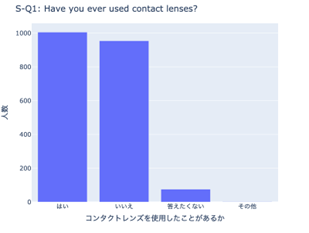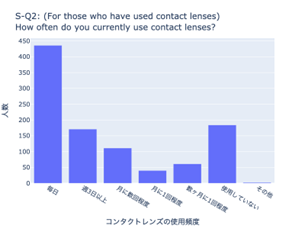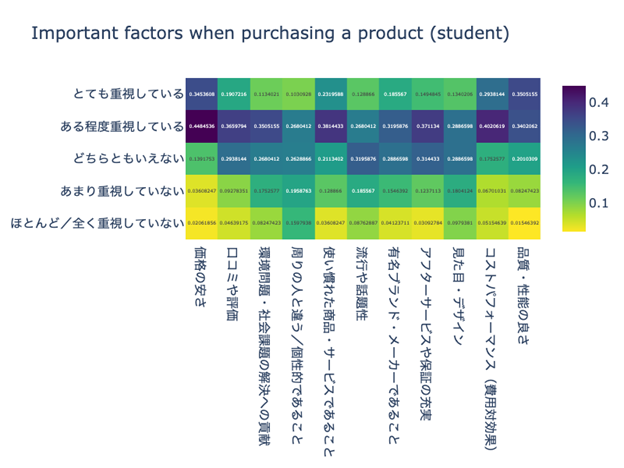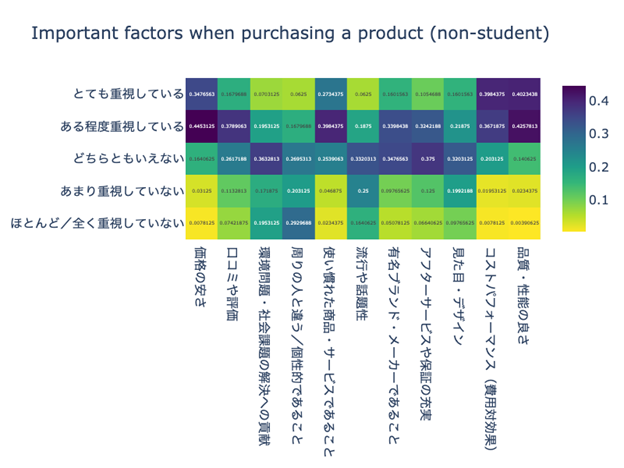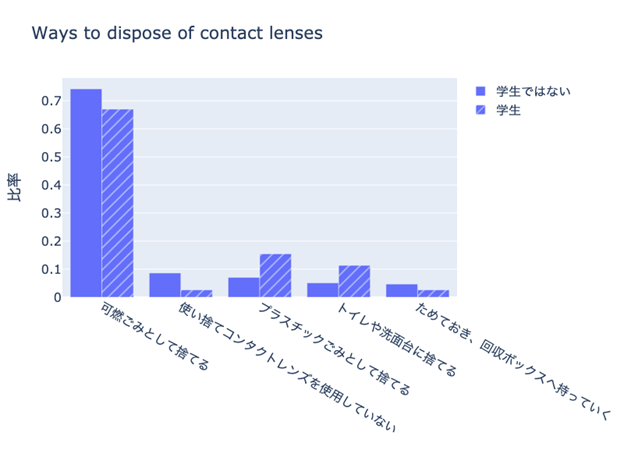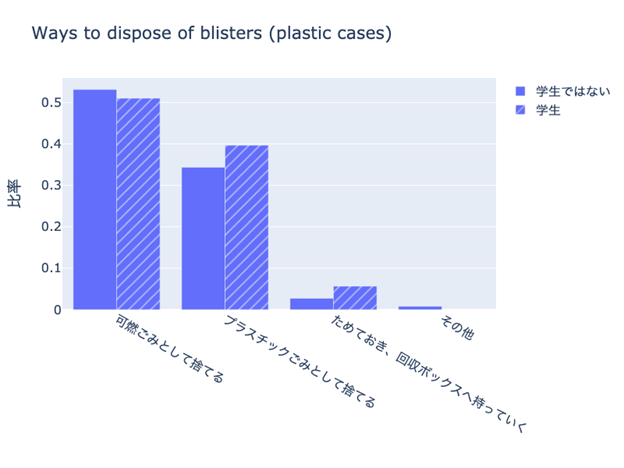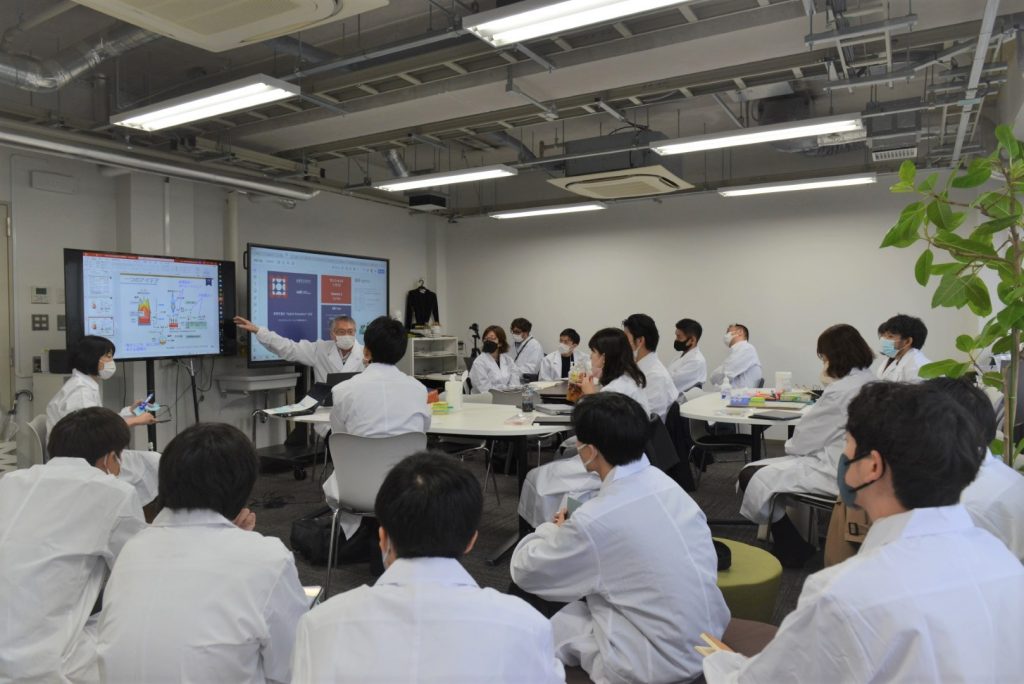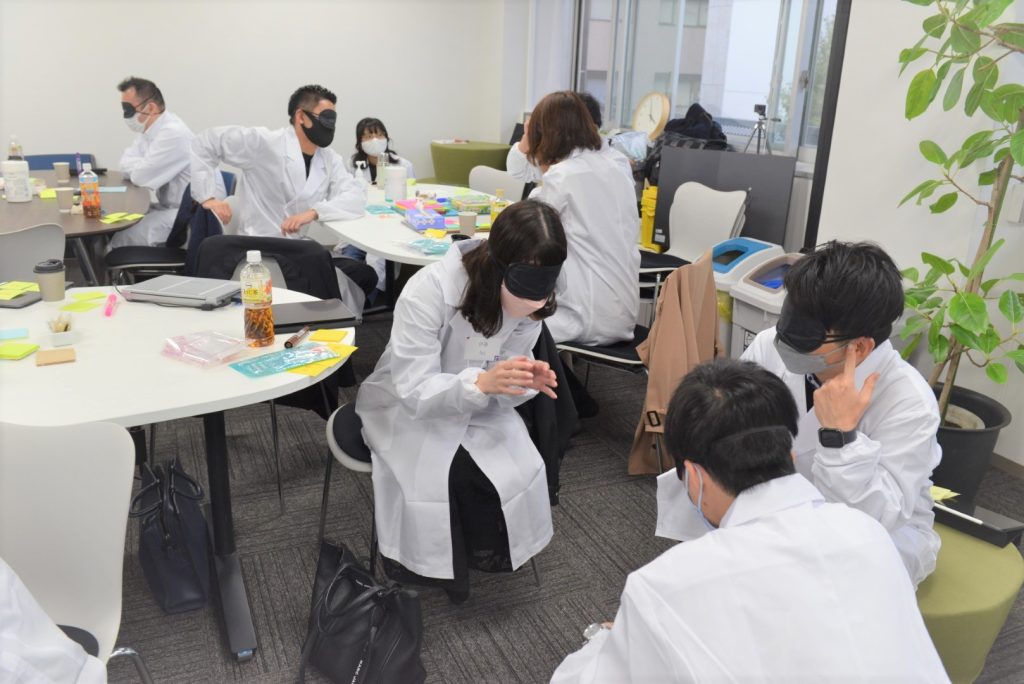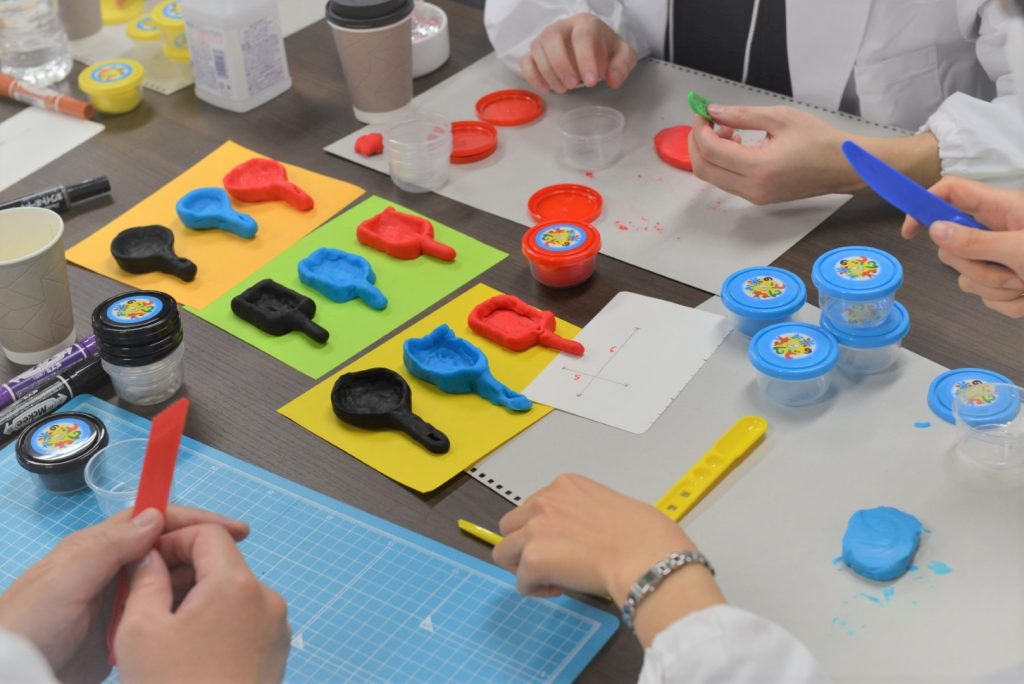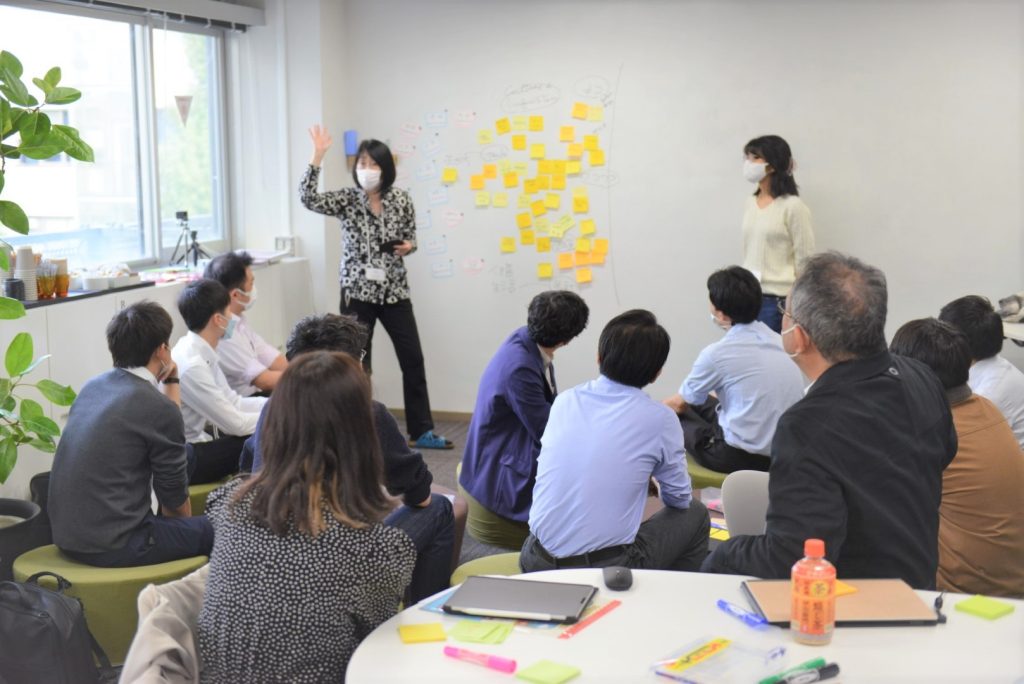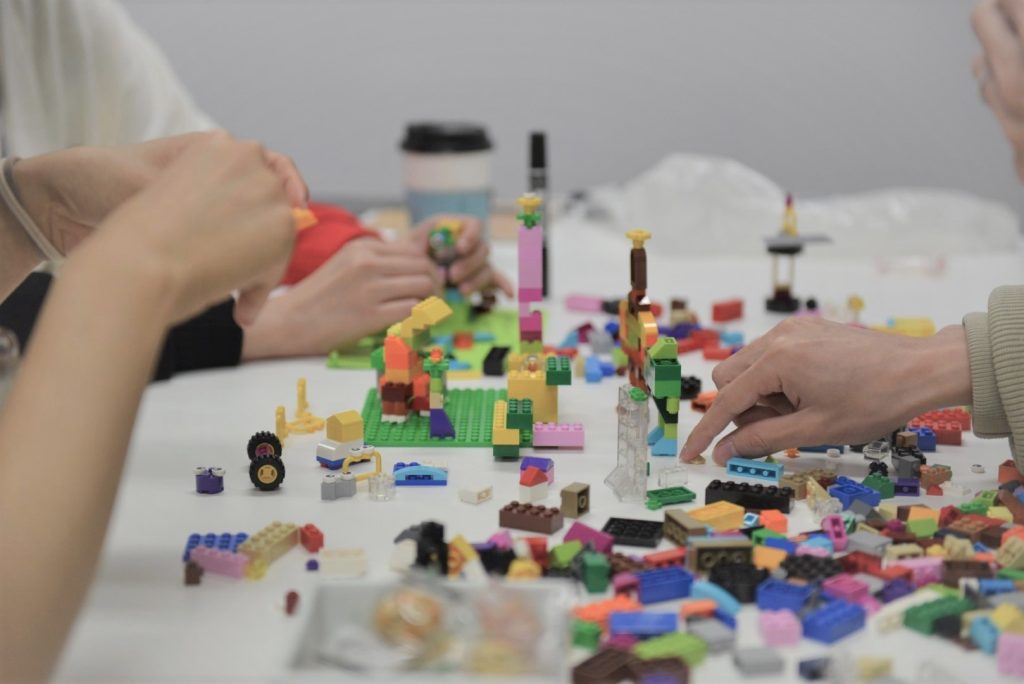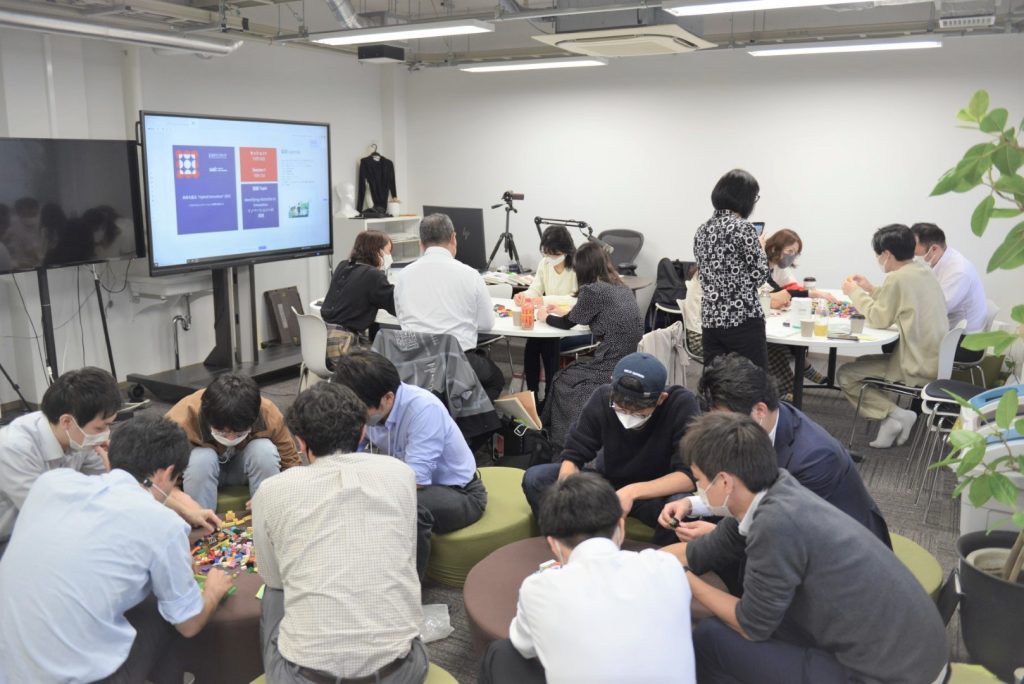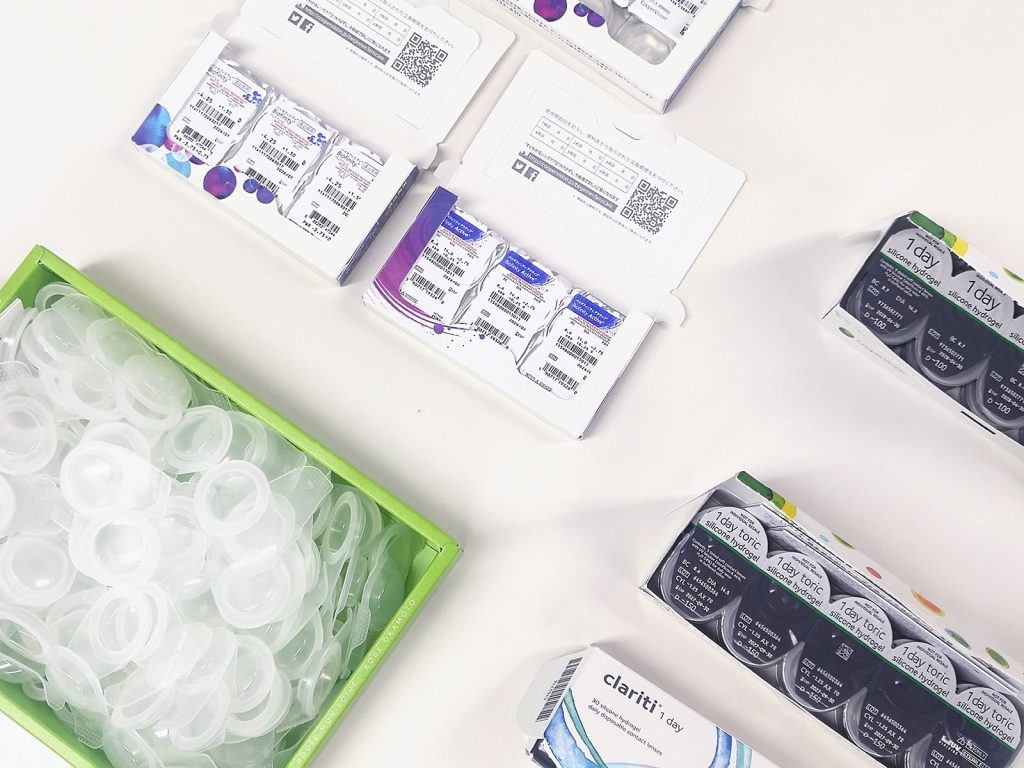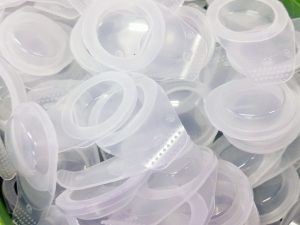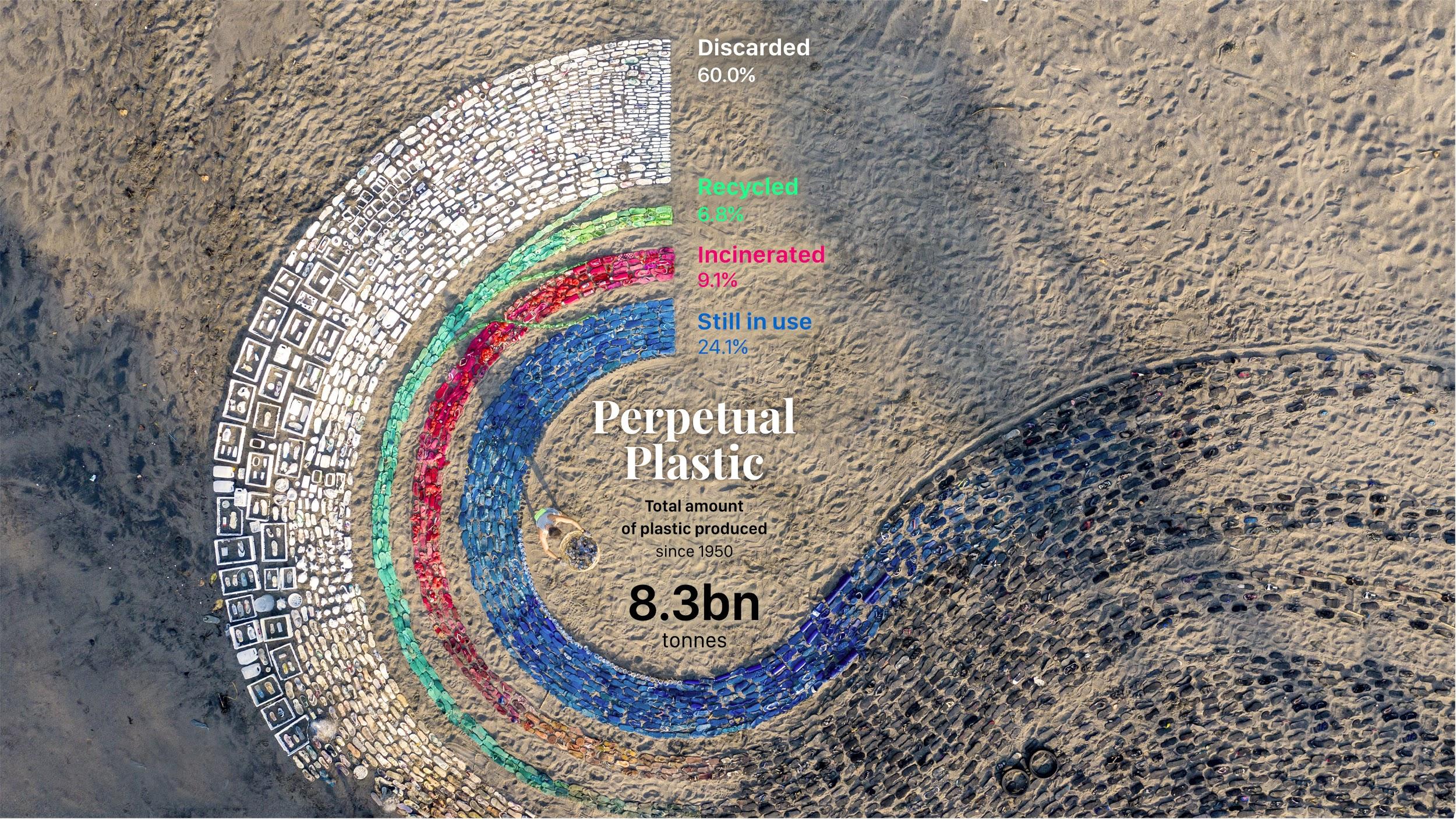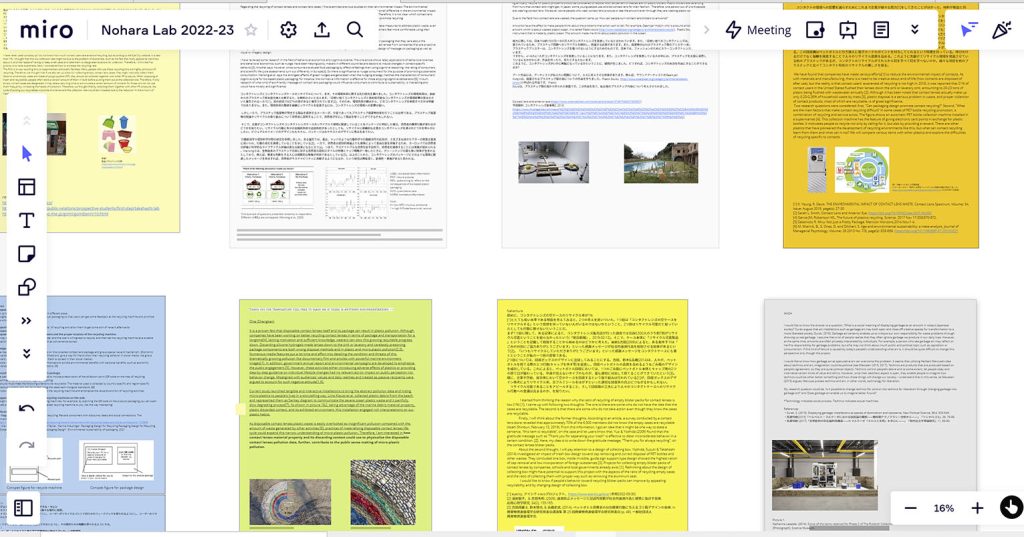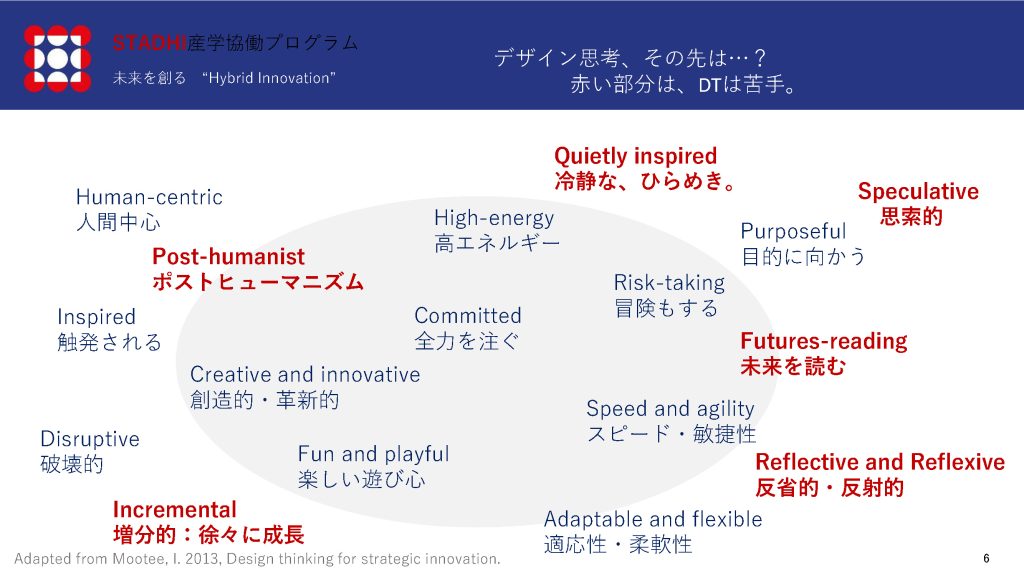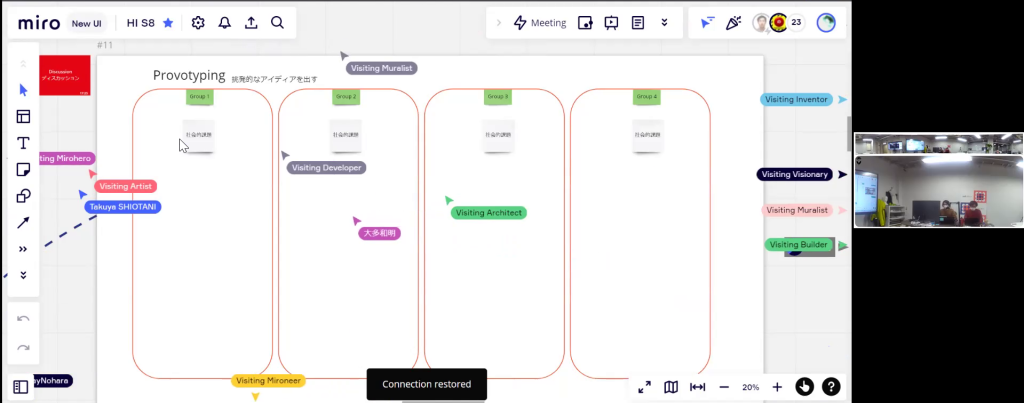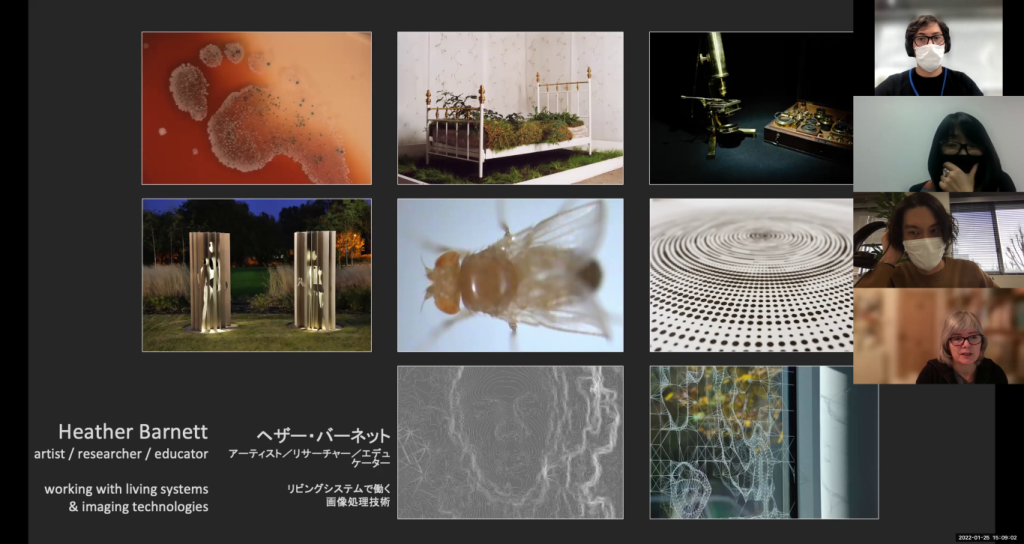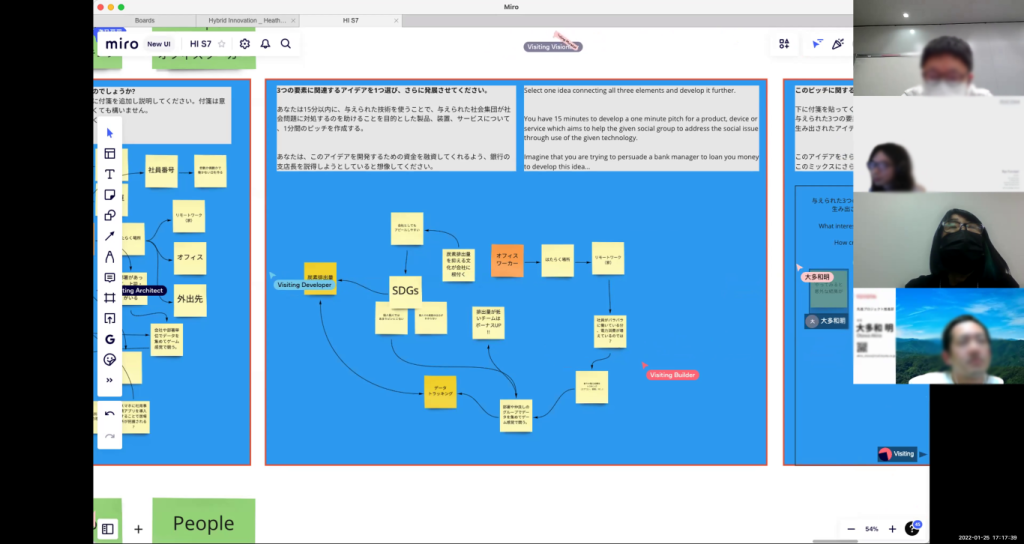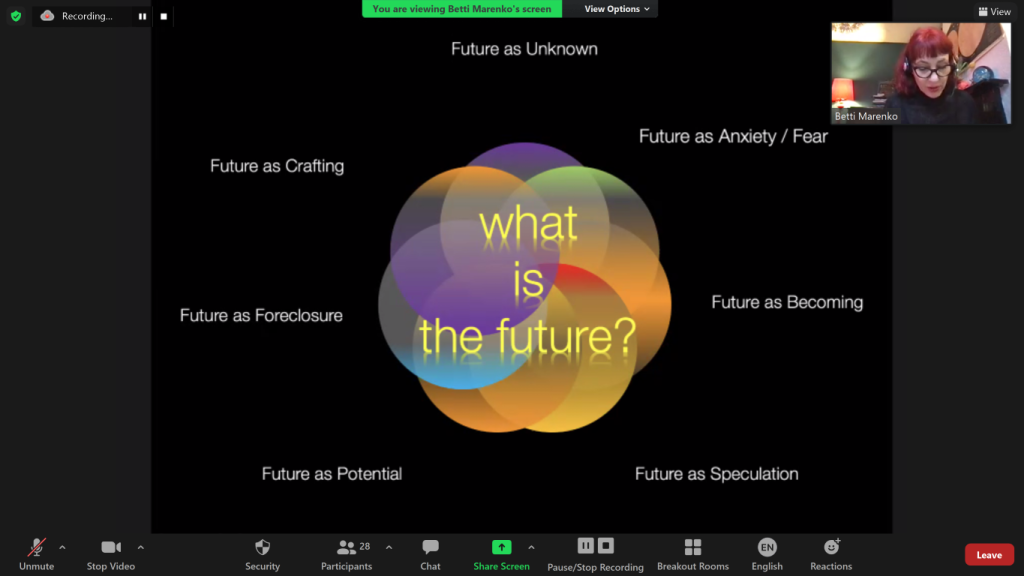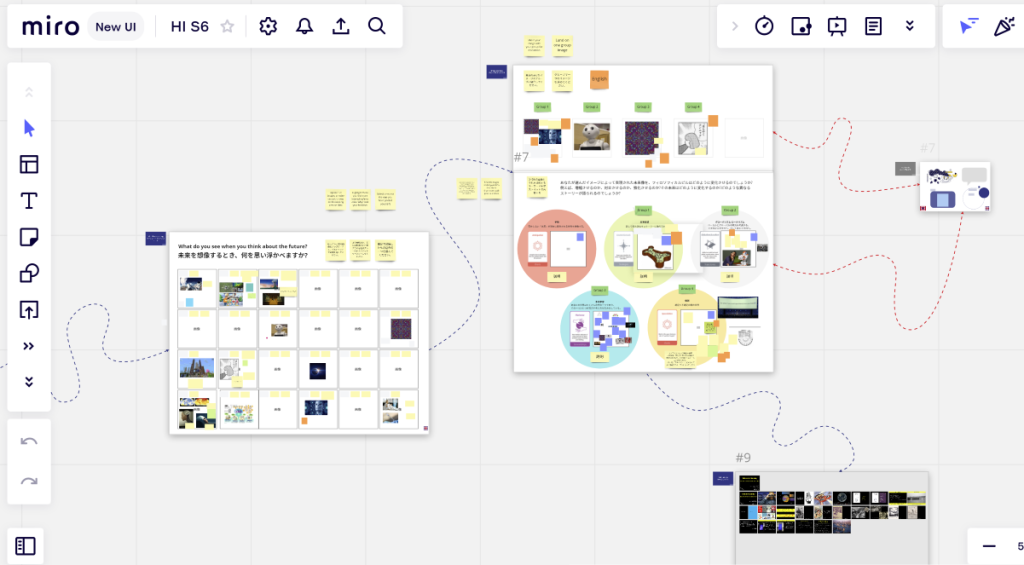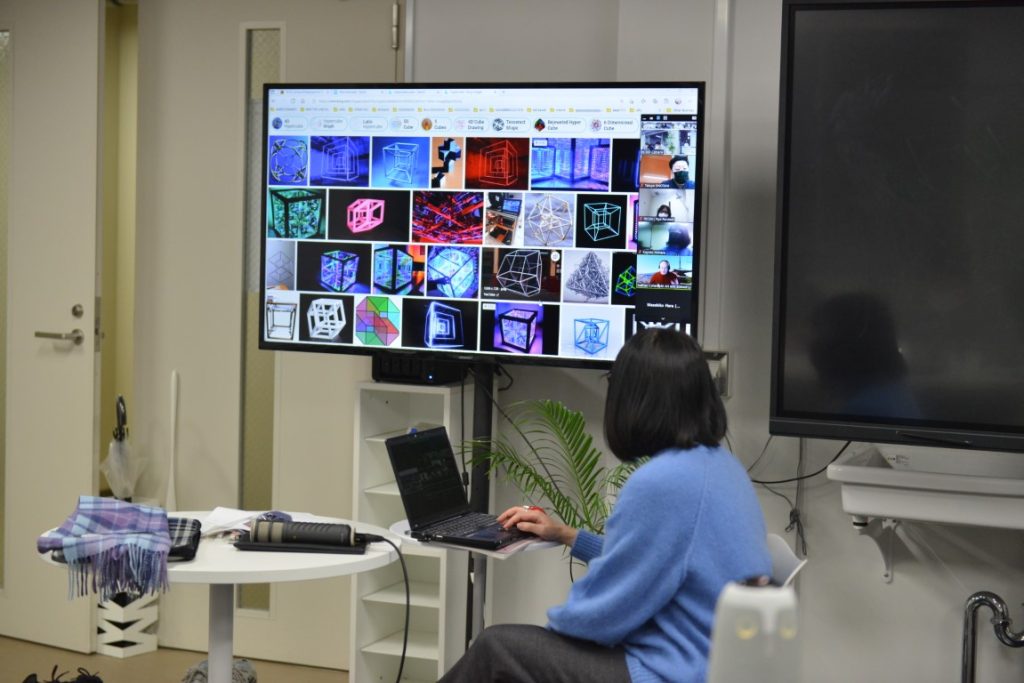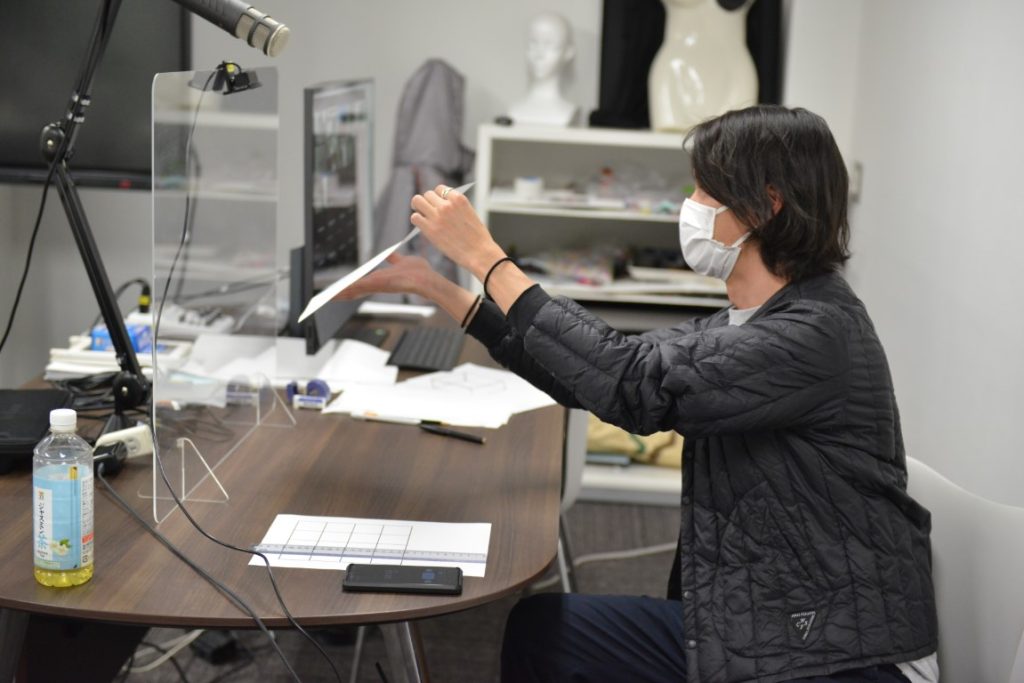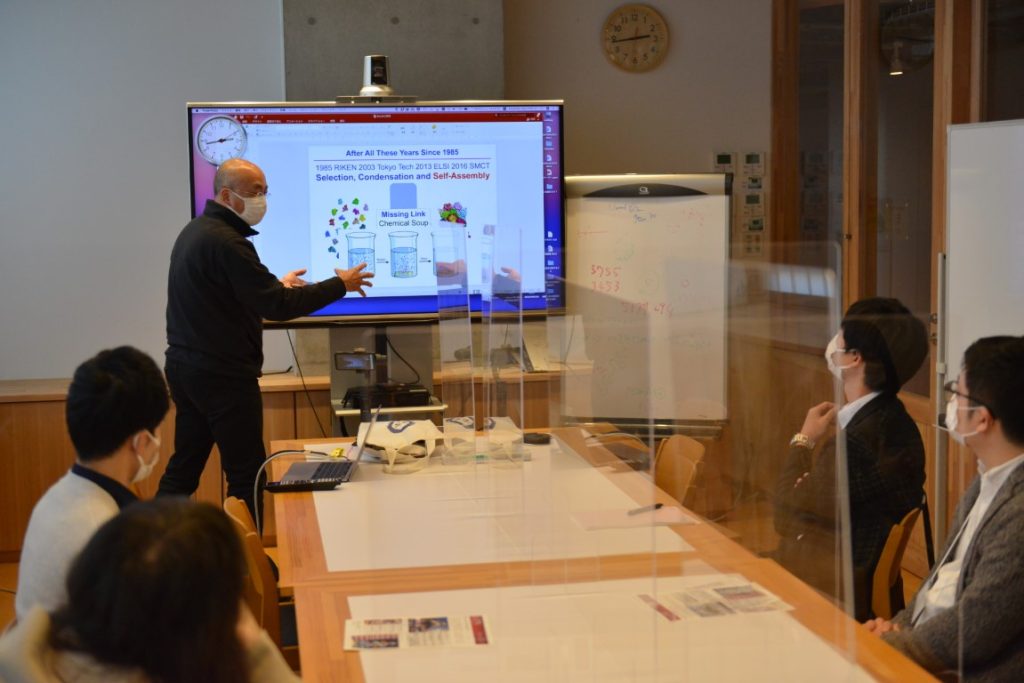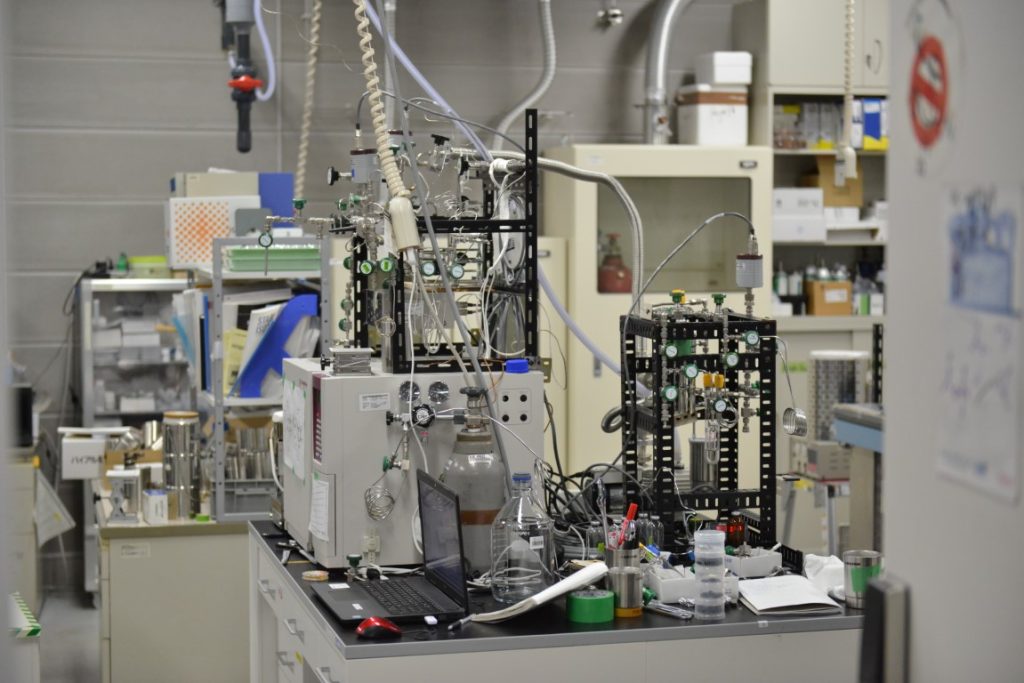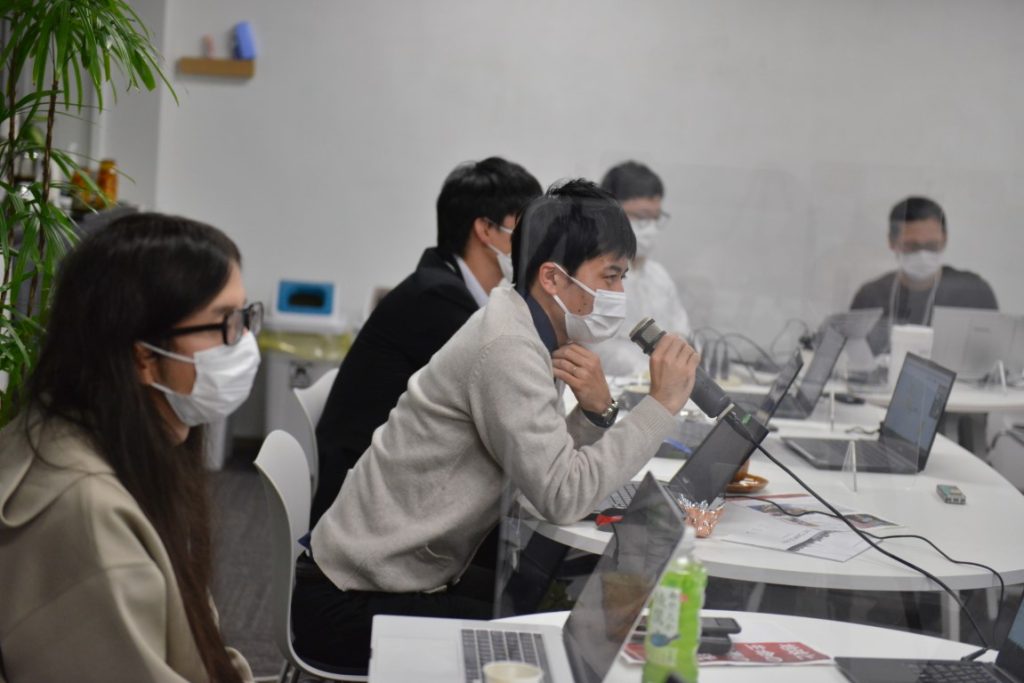この記事は野原研スタッフと学生による共同執筆であり、野原教授が日本語に翻訳しています。野原研とクーパービジョン・ジャパンのコラボレーションについては、こちらの記事もお読みください。
日本におけるコンタクトレンズ使用に関する調査研究
東京工業大学の野原研究室では、クーパービジョン・ジャパンと共同で、使い捨てコンタクトレンズ (CL) が環境・社会に与える影響とこれからのあり方について研究を進めています。本プロジェクトは、2022-23年後期のアート/デザインコンテストフェーズと、それにつながる基礎研究を行なう前期フェーズとで構成されています。ここでは第1フェーズの結果を報告し、このテーマに適した研究方法の開発と、10月に大学で開催された新著効報告イベント、および次フェーズの計画について説明します。
まず文献レビューでは、日本の一般的なリサイクル政策、CLの消費者行動、およびCLのブリスター包装(ポリプロピレン、ヒドロゲル、カートン)デザインに焦点を当てました。このレビューによって、国内および国際的な情報源から見つかるデータ間の不一致(取得方法やクオリティを含め)など、問題が浮き彫りになりました。必要なのはフェーズ2で私たちのデザイン提案のベースとなる、日本でのCL使用に関するベースラインレポートです。それを作るために、学生が提起した調査ポイントを組み込んでアンケート調査を作り、実施しました。その結果得られた定量的データは、この後で行なう定性的R&Dの基礎となっていきます。結果の一部を次に紹介します。
アンケート結果
ジャストシステムズ提供のインターネット調査サービス「FASTSK」を通じ、4問のスクリーニング調査と15問からなる本調査を実施。質問項目は、文献レビューによって提起された3主要分野を軸に設計しています。スクリーニング調査から2141件の回答を収集、うち2035件が有効。次の図は有効回答者の年齢と性別を示しており、バランスの取れた調査パネルであることを表しています。
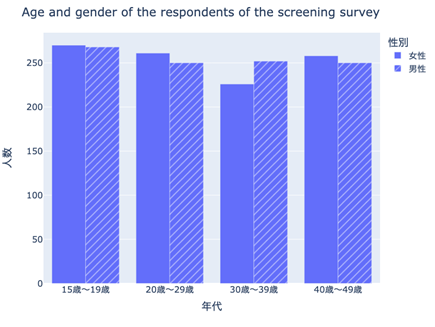
回答者の約半数がコンタクトレンズを使用し、年齢のために使用をやめた人はわずか20%であるのに対し、約60%が週3日以上の高頻度でコンタクトレンズを着用し続けていることがわかります。人口の約30%が日常的にコンタクトレンズを使用していると推定すると、この集団に情報を伝え行動を変えさせる試みは、社会や環境に大きな影響を与える…と言えそうです。
本調査では (1)コンタクトレンズを使用したことがある、あるいは (2)現在コンタクトレンズを使用している819人 に配布し、450の回答を収集、そのうち447が有効。調査結果の主要ポイントにつき以下に概説します。
コンタクトレンズの使用と消費者行動
CLを長期間使用しているユーザは、より高い頻度で使用する傾向にあります。このことは一見当然のようですが、CLが生活に根付いた、日常的必需品であることをあらためて示しています。
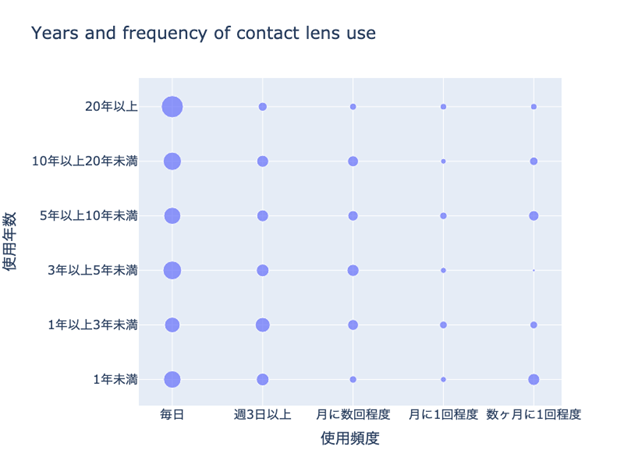
使用について詳細に見ていくと、使い捨てCLのタイプごとに異なる習慣を持つユーザーグループがあることがわかります。1日使い捨てレンズのユーザー層は、(眼鏡はかけず)CLだけを高頻度で使用する人から、たまにCLだけ使う人まで、多様なグループで構成されています。一方、2週間以上の使い捨てCLのユーザーグループは比較的「CLだけ派」で、高頻度でのみ着用する人たちで構成されています。2週間の使い捨てと1か月の使い捨てを使用するユーザーの違いは、調査からは判断できず、ここはCooperVisionの専門家によるドメイン知識のインプットを期待しています。
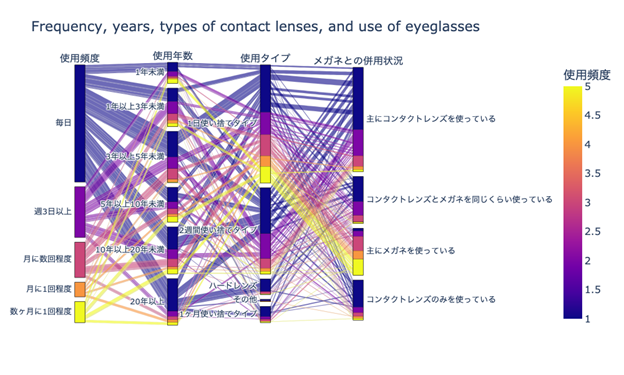
またCLの購入に影響する要因については、若年層(特に学生)は、他の回答者より「環境・社会問題への企業の貢献」や「製品の外観やデザイン」に重点をおく傾向にあることが注目されています。
環境意識とリサイクル行動
回答者の環境意識やリサイクル行動に関する質問への回答を分析したところ、ほとんどの回答者が環境に配慮し、生活の中でなんらかの環境保全に取り組んでいることがわかりました。
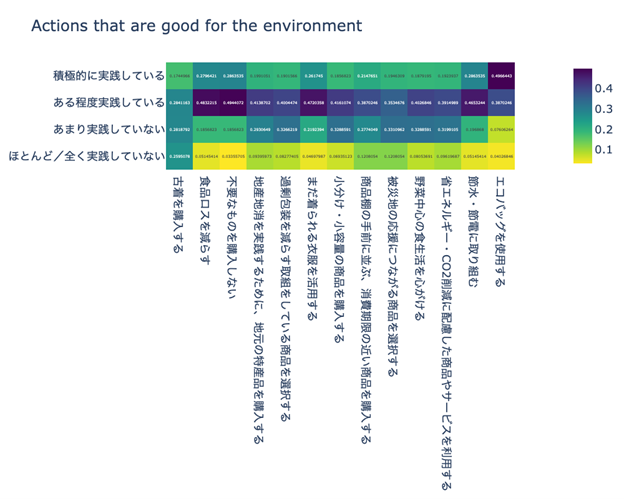
しかし、CLプラスチック廃棄物のリサイクルに関しては、70%近くが燃えるゴミとして処分しています。また約50%がブリスター(プラスチックケース)についても燃えるゴミとして扱っており、理想的な処分方法が取られているとは言えません。企業や政府による政策や規制は特定の分野を取り上げることはなく、これは「特定の製品の顧客側から環境問題に貢献する方法」が不足していることを意味します。
公共の場、診療所、薬局などにリサイクルボックスがあれば確かに役に立つでしょう。しかしCL廃棄物のリサイクルに参画するよう、ユーザーを動機付けるには、さらに何らかのしかけが要ることが予想されます。
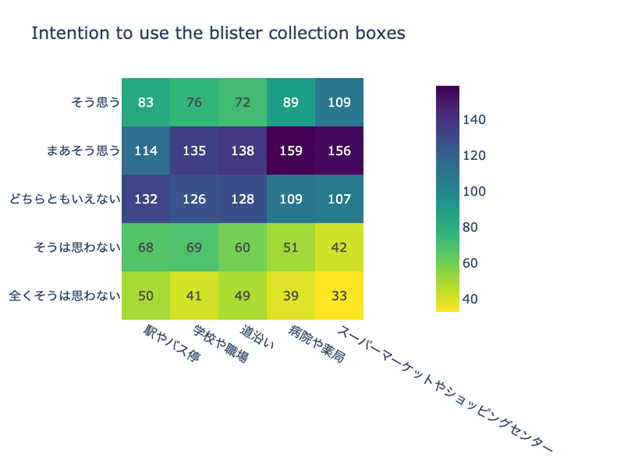
上記の探索的インサイトに基づいて、3グループの学生がさらに分析を行いました。
クーパービジョン・ジャパンおよび第三者へのプレゼンテーション
10月14日野原研究室で、朱心茹助教が分析したアンケート調査結果を、クーパービジョン・ジャパンチーム、渡辺光章氏(PROTOTYPE Inc.代表取締役)、坂本敏昭氏(ナヴァプロダクツプロダクトデザイナー)、曽田暁氏(大田区産業振興課)に向けて発表し共有するイベントが開催されました。渡辺氏と坂本氏には、第2フェーズで学生をご指導いただきます。
グループ1
消費者行動、主にリサイクル意識と使用済みレンズ+ブリスターの廃棄方法に焦点を当てています。Covid19前後のCL使用方法の変化も、調査における1つの側面となりました。調査結果によると、ほとんどの消費者はレンズとブリスターを可燃またはプラスチックごみとして処分しています。使用済みのレンズやブリスターを収集ボックスに持ち込む人はほとんどいません。一方学生ユーザーは、環境問題により注意を払うCLブランドを選択することを好むようです。
本グループのメンバーは、顧客による収集ボックスの使用率が低い理由を検討しました。回収箱の場所に行くのが面倒なのか? あるいは使用済みレンズやケースのリサイクルについて知らないのか。この先のステップは、ユーザー使用後にそれらを簡便に収集できる方法を見つけ出すことです。当初のアイデアの一つに、「P2C」パッケージデザインを提案し、折り紙のように折りたたむことで美しさと楽しさを兼ね備えた収集しやすい容器に変え、顧客にリサイクルの過程を楽しんでもらいたい、というものもありました。
グループ2
日本のリサイクル政策と規制対象製品に着目します。研究課題の一つに、容器包装リサイクル法などについて、包装に記載を入れるとどうなるか、があります。特定の材料で容器やパッケージを作られていれば、その処分法については記載が求められます。何らかのサインがデザインに組み込まれている場合、リサイクル活動にどう影響するか? さらには、もっと根源的なクエスチョンもー「コンタクトレンズのない未来」を仮想的に想定し、それでも会社に利益をもたらすには、どうすればよいのか。企業には、環境への取り組みを示すことが社会から求められています。ブリスターパッケージの持続可能性に関する議論の、さらに基礎となる議論です。
アンケート調査の結果に基づき、学生たちは次のように考えています。まず参加者はふつう、たとえプラスチックの組成が明記されていても、パッケージを燃えるゴミとして処分します。つまりブリスターパッケージ上の記号は、リサイクル行動に影響を与えません。パッケージより、ゴミ集積所の方に焦点を移すべきでしょう。第二に、若い学生などは環境問題への意識が高い傾向にあり、パッケージをゴミ集積所に持って行くだけの心意気があります。彼らは「コンタクトレンズなしの将来」を想定する会社を選ぶかもしれないのです。次のステップでは、業界が生み出す廃棄物の量に関するデータを、視覚化する方法について検討します。
グループ 3
とくに日本のCL使用状況に関心を寄せています。文献レビューから、次の2点に着目しました:CLへのアクセスが容易になるほど、適切に使用が減っていることと、使用後の取り扱い方に対する認識と関心の欠如、です。これらの調査結果からグループ3は、パッケージデザインや企業行動アプローチから、消費者の意識・行動をどのように改善できるか、に興味を持ちました。そこから次の研究課題を設定しています:
- パッケージに環境への懸念事項を伝えるデザインを組み込んだ場合、CL消費者の行動はどのように変化するか?
2. 製品の「ウィークポイント」を消費者に伝えることは、会社に利益をもたらすか?
「環境・社会問題への配慮」が、消費者のメーカー・ブランド選びに影響を与える可能性があるという調査結果から、第2フェーズのアプローチを考案しています。CLによって引き起こされ得る社会的および環境的問題(たとえば目の損傷、プラスチック問題など)を「あえて伝える」ことが、消費者行動にどう役立つか、に取り組みます。
次フェーズへ
10月に実施した報告会では、研究課題への答えとアイデアに基づきR&Dに挑むことで合意しました。11月には、PROTOTYPE Inc.のチームにご指導をいただき、最初のスケッチを作成するデザイン手法を学びます。12月には再び関係者が一堂に会し、2回目の進捗報告会議を行います。第4クオーター中に東工大で、そしてPROTOTYPE Inc.のサポートをいただきながらデザインプロトタイプを開発していきます。2月に完成、2023年3月に審査を予定。3月初旬には、東京都心の渋谷スクランブル内の渋谷QWSにてで公開イベントを開催します。学生によるプロポーザル展示や、クーパービジョン・ジャパンによる優秀デザインの表彰式などを行う予定です。
プロジェクトビジョン2022の詳細については、↓過去の投稿(日本語・英語)もご参照ください。
Project Vision: research results from Phase 1
This article was co-written by Nohara Lab staff and students. For a first introduction to Nohara Lab’s collaboration with CooperVision Japan please read this post.
Planning research on contact lens use in Japan
The Nohara Lab at the Tokyo Institute of Technology are collaborating with CooperVision Japan on the environmental impact of single-use contact lenses (CLs). The projects comprises an initial research phase to inform a design contest to be undertaken by the students in the 2022-23 autumn and winter terms. This blog reports on the completion of the first phase and covers the final development of appropriate research methods, a description of the event held at the university in October 2022 and plans for the next phase of collaborative work.
A review of literature focused on three key areas: general recycling policy in Japan, CLs consumer behaviour, and specific issues concerning the design of CLs blister packaging (i.e. polypropylene), hydrogels and carton. The review highlighted inconsistency across data from national and international sources, obtained through various methods and of varying quality. The team quickly agreed on the need to produce a baseline report on CLs usage in Japan that could reliably inform design proposals to be presented in Phase 2. Quantitative data from a custom-designed questionnaire survey could easily incorporate a range of questions to address most of the points raised by the students and form the basis for subsequent qualitative R&D.
Questionnaire results
A screening survey with four questions followed by a main survey which consists of 15 questions was conducted via Fastsk, an internet survey service provided by JustSystems. All questions were designed around the three key areas raised by the literature review.
We have collected 2141 responses from the screening survey, among which 2035 were effective. The following figure which demonstrates the age and gender of the effective respondents show we have well-balanced research panels.

The figures above indicate that about half of the effective respondents have used contact lenses and only 20% stopped using contact lenses mainly due to their age, while about 60% continue to wear contact lenses at a high frequency of three or more days a week.
Estimating from these results, it is safe to say that approximately 30% of the population use contact lenses on a daily basis, so attempts to communicate information to this group of people or to change their behavior would have a significant impact on society and the environment.
We have distributed the main survey to 819 people who (1) have used contact lenses and (2) are currently using contact lenses and collected 450 responses, among which 447 were effective.
Key findings addressing our initial interests are outlined below.
Use of Contact Lenses and Consumer Behavior
CLs are more frequently used by those who use them for a longer period of time. This seems to be a natural result, however, it is an empirical indication that contact lenses are a stable necessity that has taken root in people’s lives.

A more detailed look at contact lens usage reveals there are groups of users with different habits for each type of disposable CL. The one-day disposable lens user group consists of a diverse group of people ranging from those who only wear CL (but not eyeglasses) and use them at high frequency to those who use both and use CL occasionally. On the other hand, the user group of two-week or longer disposable CL is relatively monolithic, consisting mainly of those who only wear them at high frequency. The difference between users who use two-week disposable and one-month disposable cannot be determined from the survey and we expect the input of domain knowledge from CooperVision professionals.

Another phenomenon that attracted our attention was that when asked about the important factors that will affect their purchase of CLs, younger respondents (students in specific) tend to focus on “company’s contribution to environmental and social issues” and “appearance and design of the product” than other respondents.
Environmental Awareness and Recycling Behavior
Concerning the above, when analysing the answers to the questions about respondents’ environmental awareness and recycling behavior, we found that most of the respondents are environmentally conscious and take action to protect the environment in their lives.

However, when it comes to the recycling of plastic waste related to CLs, the ways of disposal are not ideal, as nearly 70% of people dispose of them as burnable garbage, and about 50% of people also dispose of blisters (plastic cases) as burnable garbage. Since policies and regulations by companies and governments do not cover the particular area, this implies a lack of ways to contribute from the customer’s side.
Surely setting recycling boxes in public places, clinics, or pharmacies will help, but additional encouragement might be needed to fully motivate the users to participate in the recycling of CL waste.

Based on the exploratory insights we gained from the survey, three groups of students conducted further analysis from the point of view of their initial research questions.
Presentation to CooperVision Japan and third parties
An event was held on 14th October at Nohara Lab to present the results of the questionnaire survey as analysed by Prof. Xinru Zhu to the CooperVision Japan team, Mr. Mitsuaki Watanabe (CEO of PROTOTYPE Inc.), Mr. Toshiaki Sakamono (Product Designer of Nava Products), and Mr. Satoru Sota (Industrial Promotion Division, Ota City). Mr. Watanabe and Mr. Sakamoto will assist the students in the second phase.
Group 1
Group 1 focused on consumer behavior, most about their recycling awareness and how they dispose of used lenses and blisters. The change in how they use CLs before and after the covid19 is also one aspect of the research. The survey results show that most consumers dispose of the lenses and blisters as either burnable or plastic garbage. Few will bring the used lenses and blisters to the collection boxes due to unknown issues. On the other hand, student users prefer to choose the brand of CLs that pay more attention to environmental problems.
These findings made Group 1 members consider the reasons for the lower usage of collection boxes when customers have environmental expectations from the product. Is it too troublesome to go to the place of collection boxes? Is it that they do not know about recycling used lenses and blisters? According to these speculations, Group 1’s next step is to consider a way of helping the users collect the used lenses and blister easily. One initial idea is to proposes a kind of package design called “P2C” to transform the package box into a collectible container with beauty and fun by folding (“Origami”) that they hope could let customers enjoy the process of collecting.
Group 2
The topics of interest to Group 2 include the recycling policy in Japan and the products subject to regulation. They came up with two research questions. One is the impact of introducing a sign on blister packaging just as the Containers and Packaging Recycling Law. Containers or packages made of certain materials are required to have a sign of that material to promote recycling. If the sign of the blister package is designed and put on products, how will our recycling actions be influenced? The second question is about speculating on a ‘no contact lenses future’ in which users could benefit the company. Companies nowadays are required to show their environmental initiatives. Speculating about the future creates the basis for discussion on the sustainability of the blister package.
The students could address some questions based on the results of the questionnaire survey. Firstly, participants generally dispose of plastic packages as burnable garbage, even though its plastic composition is clearly stated on the sign. From this finding, the sign of the blister package will have no impact on recycling behavior. We can shift focus to the garbage stations. Secondly, younger participants and students tend to be highly aware of environmental issues, showing a willingness to use the garbage station for blister packages. They can choose the company speculating on the ‘no contact lenses future.’ For the next steps, we will consider how to visualize the data around the amount of waste produced by the industry.
Group 3
Group 3’s topics of interest were issues related to CLs in Japan. From the literature review, Group 3 paid attention to two points. One is the easier it has got to access CLs, the lower it has become to use CLs properly. The other is a lack of recognition or interest in post-use treatment. From these survey results, Group 3 became curious about how it is possible to improve consumers’ mindset/behavior from package design or company action approaches. Thus Group 3 set up the following two research questions:
1. How does CL consumer behavior change when packaging is designed to communicate concerns?
2. How can communicating weaknesses benefit the company?
From the survey result, which showed that the company’s commitment to expressing “consideration for environmental and social issues” may influence consumers’ choice of makers and brands, Group 3 came up with the second phase’s approach. That would address the question: how can communicating social and environmental issues caused by CLs (e.g., eye damage, plastic issues, etc.) be effective in consumer behavior?
Informing the next phase of work
At the event in October, all parties agreed to undertake R&D guided by new, detailed research questions and initial ideas for proposals. In November the students will be guided by the team at PROTOTYPE Inc. and inducted into design methods to develop their initial sketches. The wider team will sit together again in December for two progress meetings, and prototypes will be developed over the winter initially at Tokyo Tech and then at PROTOTYPE Inc.. The final proposals will be completed in February and reviewed by March 2023. At the beginning of March, a public event will be held at Shibuya QWS in central Tokyo. This will include an exhibition of the students’ proposals and a public award ceremony for the best designs led by CooperVision Japan.
For more information on Project Vision 2022 please see our previous posts (in Japanese and English):
